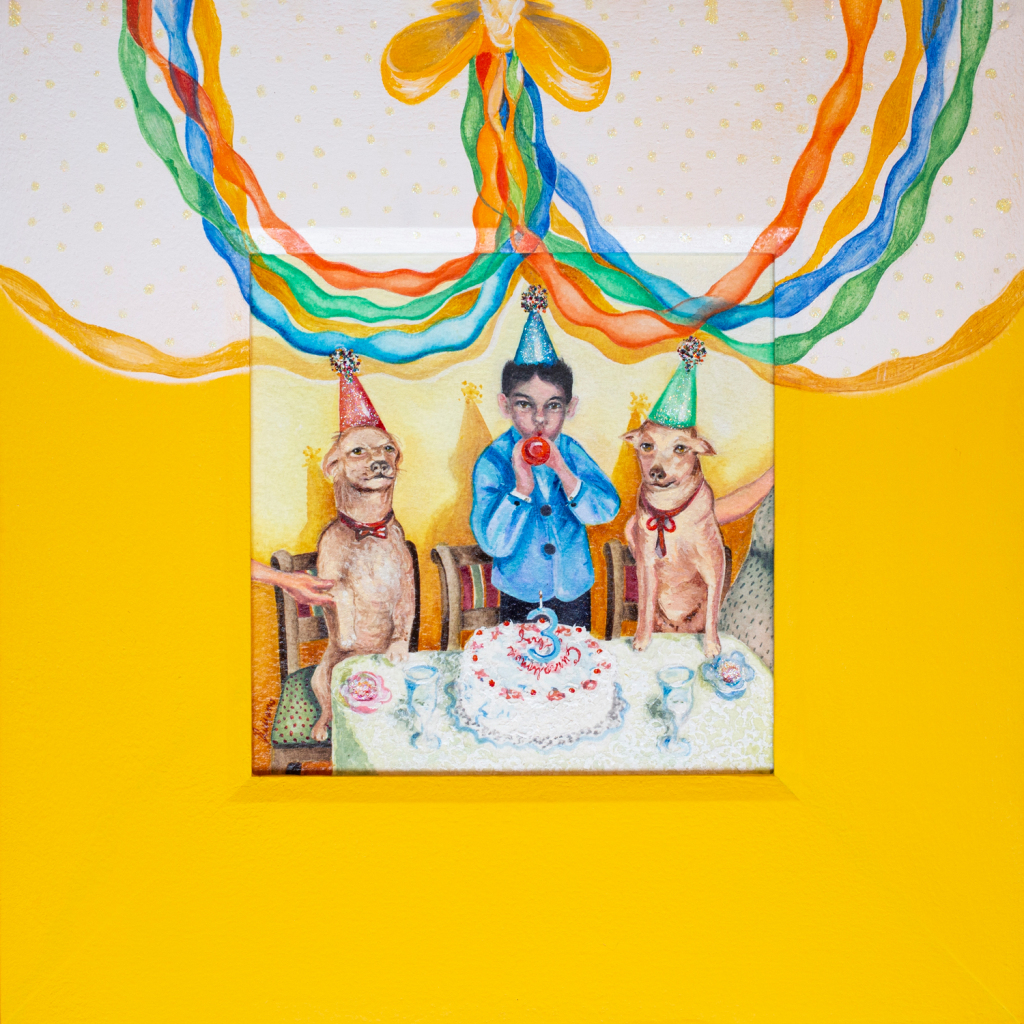ART NEWS
Nick Quijano’s Intimate Paintings Showcase Everyday Scenes of Puerto Rico
Epic scenes of the kind featured in paintings of battles, coronations, and other major historical events are not the specialty of Nick Quijano, an artist based in Puerto Rico, with an online exhibition hosted by Fort Gansevoort devoted to works geared toward intimate scenes of everyday life around his home in Old San Juan.
“I’m not into the big stories of history painting,” Quijano said in a Zoom interview from his studio last month. “I’m into the little stories—I want to appeal to the intimacy of feeling and to the heart.”
Quijano began the series of paintings in the show in 1980 and has been “doing scenes of Puerto Rico ever since,” he said. “I haven’t stopped because I still relate to them.”
Some of Quijano’s pieces draw from his childhood memories. In Cumpleaños con Brownie y Nilka (1956), completed in 2020, a young boy wearing a blue blazer and a blue party hat stands in front of a birthday cake with a candle in the shape of the number three. The boy, a young Quijano, is flanked by two dogs also with hats on their heads. Above them are streamers in red, yellow, blue, and green.
“I didn’t have any friends,” Quijano recalled of the scene in the painting, which is one of the few works in the series based on a photograph. “This aunt of mine who was organizing the celebration, she had two dogs, so she put hats on them and they were my special friends for the party. There’s a lot of love in there.”
Nick Quijano, Ave María (In memoriam of the victims of hurricane María), 2020.
Courtesy the artist and Fort Gansevoort
The work is also animated by paint that goes beyond the confines of the canvas onto a wooden matte that Quijano constructed—a recurring motif throughout the series. “It goes beyond the frame because it seems to me that a painting is often a painting of the past—it seems to be stuck in a moment,” he said. “The extensions that I give to my paintings try to bring it to the moment, to the present. It’s not something that happened as much as something that is happening.”
Other works in the exhibition focus on ordinary encounters the artist has witnessed in Old San Juan. In Mercado (2020), two men read newspapers as they await customers at their fruit stands in a market, their legs and wares extending onto the wooden matte.
“I’m talking about things that are still alive in me,” Quijano said of a process that draws mostly from memory. He sees the works as drawing from “memory without the nostalgia. I don’t evoke it with a sense of longing. It’s something that happened and I want to celebrate it. I try to bring the feeling of what that [scene] evoked in me.”
Nick Quijano, Mercado, 2020.
Courtesy the artist and Fort Gansevoort
Another work completed last year shows a man with his raised and his eyes watering and slightly red. “It’s any man and every man,” Quijano said of Ave María (In memoriam of the victims of hurricane María). “The man hold ups his hands in hopelessness. He’s crying within the chaos that Maria left. There’s still a lot of hurt and a lot of recovery left.”
He continued, “Puerto Rico has been constantly marginalized. We’re supposed to be part of the United States, but we’re really not. As a country, we’re not free yet. We’re still a colony, the oldest colony in the world.”
Bobbito Garcia, a DJ, filmmaker, and author who organized Quijano’s Fort Gansevoort show, said that political concerns of the sort are key to understanding the exhibition. Garcia hopes the paintings “will provide context to people who don’t understand the relationship of the U.S. to Puerto Rico. These are all deeper issues that aren’t spelled out in Nick’s paintings, but I think his paintings give some background and context to this.”
Nick Quijano, Las Noticias, 2014.
Courtesy the artist and Fort Gansevoort
Garcia pointed to one work in particular that spoke to him, Las Noticias (2014), in which men sit in a plaza discussing the day’s news. At the center are two men, one who is fair-skinned and another who is Black. Garcia said paintings of the kind “allow people to see not a face of the Island but the faces of the Island and that includes Black people in Puerto Rico. I think the media doesn’t always show the diversity of our people.”
Quijano echoed Garcia’s analysis of his work, saying that he wants people to be able to connect with his paintings by seeing scenes that might feel familiar.
“I’m trying to portray them so that another audience can relate in terms of their experiences,” he said. “It’s a way of creating communication where the observer is more than just the mere passive audience. What I felt, hopefully, will evoke something in the audience’s heart and memories.”
Quijano continued, “We’re all going to die. But we want to live this experience with the most intense feelings we may have. The question is what are we going to do before we pass?” Work on the kind of paintings he creates, Quijano said, equates to “trying to make sense of this thing called life.”











